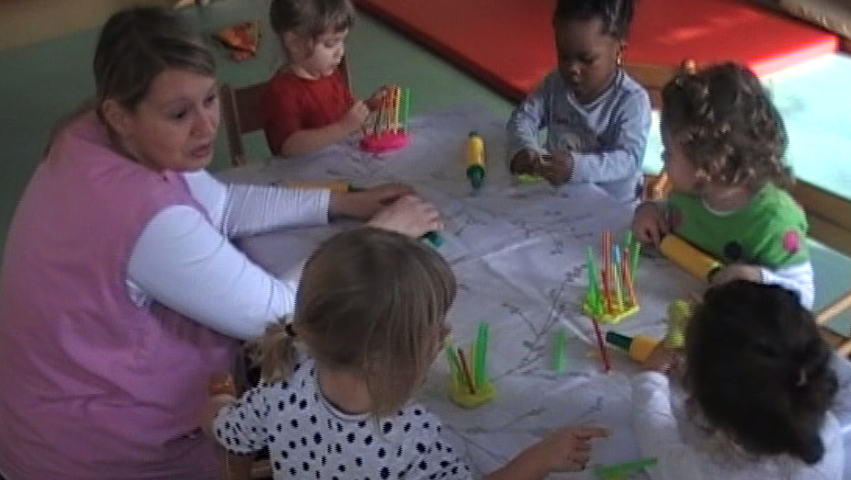A large body of evidence has documented that the frequency and the quality of early language experiences predict receptive and expressive infant language skills (Hoff, 2006; Hudson et al, 2015). However, the quantity and quality of language experiences vary significantly depending on the socio-economic condition (Hart & Risley, 1995). Particularly, children from low-income families receive less language input and of lower quality than children from higher-income families, that places them at risk for language delays and subsequent learning difficulties (Fiorentino & Howe, 2004; Cabell et al., 2013). Moreover, many low-income families are also immigrant families, and bilingual children show slower rate of language growth in each language compared to monolingual children (Hoff et al. 2012). However, also in bilingual conditions the quality of early linguistic environment is likely to predict the early language development (Hoff, 2013).
The present longitudinal study examine the rate of lexical acquisition in toddlers from Italian and immigrant low-income families ‒ that is, one language learners and dual language learners from environment at-risk for language development ‒in order to:
- compare developmental trajectories of receptive and expressive vocabulary in each of these groups, from 12 to 36 months, with Italian normative data
- compare developmental trajectories of receptive and expressive vocabulary in one language learners (Italian group) and SES-equivalent dual language learners (immigrant group)
- investigate contextual predictors of the vocabulary outcomes in these group of children, such as the quality of language input offered by the nursery school teachers and the narrative practices at home
- use results to design intervention programs addressed to nursery school teachers of toddlers from low-income families
Around 100 toddlers attending six nursery schools with high percentage of low-income families (both Italian and immigrant families) in the municipality of Verona were followed longitudinally from 12 to 36 months, at 6-month-intervals. Using a multimethod approach, at each age point the child’s receptive and productive vocabulary were assessed using the MacArthur-Bates Communicative Development Inventories (Primo Vocabolario del Bambino-PVB (Caselli, Stefanini, & Pasqualetti, 2007) ‘Gestures and words’ form (12-18) and ‘Words and phrases’ form (18-30), and nursery teacher-child communication observed during 10 min of interaction during nursery school routines. Further information was collected through questionnaires on sociodemographic data, language/s used at home, and home reading practices. The vocabulary skills in L1 of bilingual children are assessed in collaboration with cultural mediators.
Keywords
vocabulary acquisition, toddlers, low-income families, home reading practices, dual language
Principal Investigator
Manuela Lavelli, University of Verona
Project Participants
- Elena Antolini,Municipality of Verona, Educational Services (0-6)
- Chiara Barachetti, University of Verona
- Manuela Lavelli, University of Verona
- Marinella Majorano, University of Verona
- Giuseppina Messetti, University of Verona
- Rosanna Zerbato, Municipality of Verona, Educational Services (0-6)
- Elena Florit, University of Verona
- Germano Rossi, University of Milano-Bicocca
Duration
60 months (September 2016- )
Current State
Data collection accomplished; data analysis in progress; part of results already published; other publications in preparation.
Publications
Florit, E., Barachetti, C., Majorano, M., & Lavelli, M. (2023). Linguistic interactions at nursery school and language acquisition of toddlers from low-income bilingual immigrant families and monolingual families. International Journal of Bilingualism and Bilingual Education. Advanced online publication. http://dx.doi.org/10.1080/13670050.2023.2223905
Persici, V., Majorano, M., Bastianello, T., & Hoff, E. (2022). Vocabulary and reading speed in the majority language are affected by maternal language proficiency and language exposure at home: a study of language minority bilingual children in Italy. International Journal of Bilingual Education and Bilingualism, 25(10), 3729-3744. https://doi.org/10.1080/13670050.2022.2076552
Florit, E., Barachetti, C., Majorano, M., & Lavelli, M. (2021). Home Language Activities and Expressive Vocabulary of Toddlers from Low-SES Monolingual Families and Bilingual Immigrant Families. International Journal of Environmental Research and Public Health, 18, 296.
https://doi.org/10.3390/ijerph18010296
Barachetti, C., Majorano, M., Rossi, G., Antolini, E., Zerbato, R., & Lavelli, M. (2021). Vocabulary production in toddlers from low-income immigrant families: Evidence from children exposed to Romanian-Italian and Nigerian English-Italian. Journal of Child Language, 1-14.</span
https://doi.org/10.1017/S0305000921000222
Conference presentations
Florit, E., Barachetti, C., Majorano, M., & Lavelli, M. (June 19–23). Linguistic interactions at nursery school as a protective factor for promoting language development of toddlers from low-income families [Poster presentation; presenter: Florit, E.]. 26th Biennial Meeting of the International Society for the Study of Behavioral Development-ISSBD, Rhodes, Greece.
Florit, E., Barachetti, C., Majorano, M., Azzolini, S., Biondi, V., & Lavelli, M. (2021). Interazioni linguistiche al nido e sviluppo del vocabolario in bambini in condizioni svantaggiate, “XI Edizione delle Giornate Clasta”, online, 14-15 maggio.
Barachetti, C., Majorano, M., & Lavelli, M. (2018). Vocabolario in produzione di bambini bilingui a 24 mesi: evidenze dal confronto con monolingui e tra bilingui con differenti L1. In Simposio, Giornate CLASTA (Communication & Language Acquisition Studies in Typical & Atypical population) IX ed., L’Aquila, 18-19 maggio.


